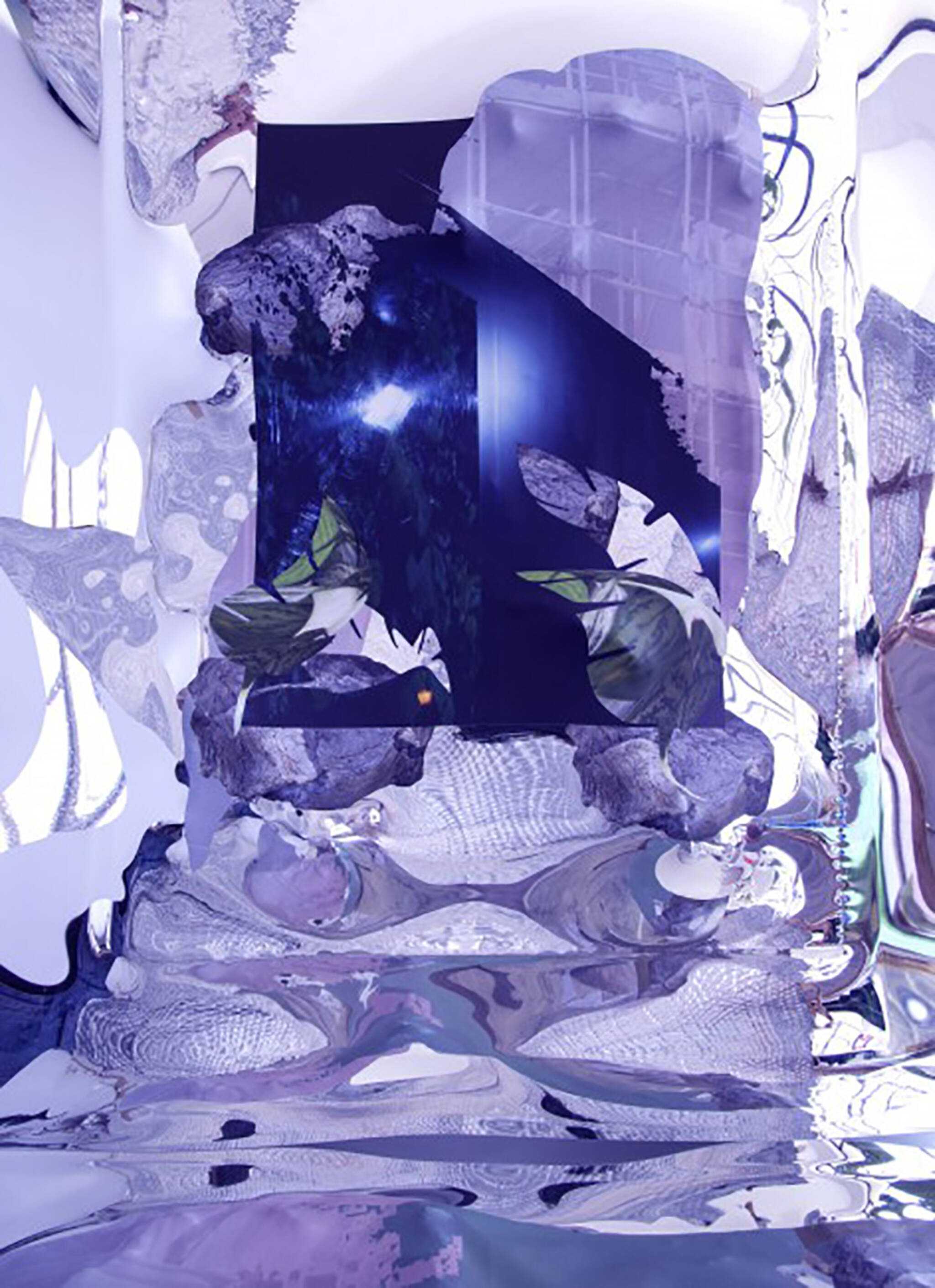
Arcades at CONTACT Gallery
The 21st century has seen a dramatic shift in the way that architecture is experienced. Advancements in technology have enabled architectural representation to visualize the built environment through the lens of the virtual, generating digital renderings that depict both proposed and already-built structures as future projections.
Through her new site-specific project Arcades, which includes an exhibition in the CONTACT gallery and a mural on the north façade of the building at 460 King St W, London-based artist Felicity Hammond considers how this camera-less mode of representing architecture implies a virtual archaeology, as existing buildings are reimagined through image-generating software.
Vistas of new cityscapes appear to excavate the past in order to renew the present, and our experience of architecture in the physical realm becomes shadowed by such images. Her project considers the timescale at play, where capital is held in the virtual depiction of space rather than the physical structure itself, and where properties are bought and sold based solely on their digital representations.
For Post Production (2018), Hammond has collaged architectural renderings and photographs she has taken of Toronto’s skyline. Her layers of images reference the methods that are used to imagine new buildings, and the tendency to build on top of industrial properties whose original function is now obsolete.
As a large-format mural positioned on the façade of a heritage building that has housed many different functions over the years, her work creates a dialogue with the surrounding developments, employing their visualization aesthetics to collapse and confuse the space between the real and the virtual. Simulated landscapes and vistas of new developments dominate the city scape, providing a window into the digital realm—not to be confused with the physical reality that it points toward.
Hammond’s installation in the gallery expands on these notions and focuses on the materials themselves through the actual construction of an imagined archaeological site. Rather than the surfaces traditionally associated with ruins and excavation sites, Hammond’s structure is clean and sleek, much like the historical buildings that are reconceived as new urban developments.
Working with fragments of images, clay and concrete, interior surfaces, and malleable acrylic sheets, she layers and combines sculpture and photography. The individual components of Arcades are titled numerically, as if catalogued from a single excavation. Fragment 04 (2018) fuses raw material with rendered plant life and is photographed in a way that confuses reflection and object, recalling the glass frontages of buildings.
The installation speaks to the architecture left behind in a period of vast urban growth as a result of both growing technologies and declining industries, and considers the urban homogenization that propels the construction of contemporary cities, paying close attention to the generic materials and motifs used to advertise future sites.
Hammond alludes to Walter Benjamin’s Arcades Project, and the concept of the archaeological arcade as something that is uncovered, or viewed as remains. Centred around the 19th-century rows of arcade shops in Paris, Benjamin’s monolithic text considers the commodification of things in the modern age and the notion of lost time embedded in displays of ephemera.
The title also extends to the arcade as a place of computer gaming; a space for science fiction and fantasy. Within Hammond’s Arcades, material representations of architectural structures and substances are put on display, and appear to have been excavated before they have been built. Throughout her work, the past and future collide as the ruins and technologies of the built environment are entwined.
Curated by Bonnie Rubenstein